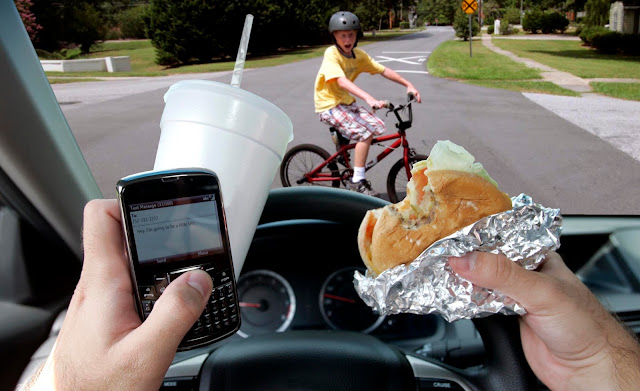Although most distractions are avoidable, some distractions
are impossible to completely prevent – instead they must be managed. Driving
requires your full attention. You can take charge of eliminating distractions
to focus on the road ahead. Here are 10 tips to avoid distractions while
driving:
10. Fully focus on driving. Do not let anything divert your
attention, actively scan the road, use your mirrors and watch out for
pedestrians and cyclists.
9. Store loose gear, possessions and other distractions that
could roll around in the car, so you do not feel tempted to reach for them on
the floor or the seat.
8. Make adjustments before you begin your trip. Address
vehicle systems like your GPS, seats, mirrors, climate controls and sound
systems before hitting the road. Decide on your route and check traffic
conditions ahead of time.
7. Finish dressing and personal grooming at home – before
you get on the road.
6. Snack smart. If possible, eat meals or snacks before or
after your trip, not while driving. On the road, avoid messy foods that can be
difficult to manage.
5. Secure children and pets before getting underway. If they
need your attention, pull off the road safely to care for them. Reaching into
the backseat can cause you to lose control of the vehicle.
4. Put aside your electronic distractions. Don’t use cell
phones while driving – handheld or hands-free – except in absolute emergencies.
Never use text messaging, email functions, video games or the internet with a
wireless device, including those built into the vehicle, while driving.
3. If you have passengers, enlist their help so you can
focus safely on driving.
2. If another activity demands your attention, instead of
trying to attempt it while driving, pull off the road and stop your vehicle in
a safe place. To avoid temptation, power down or stow devices before heading
out. Drivers should use caution while using voice-activated systems, even at
seemingly safe moments when there is a lull in traffic or the car is stopped at
an intersection, because potentially dangerous distractions can last longer
than most drivers expect.

